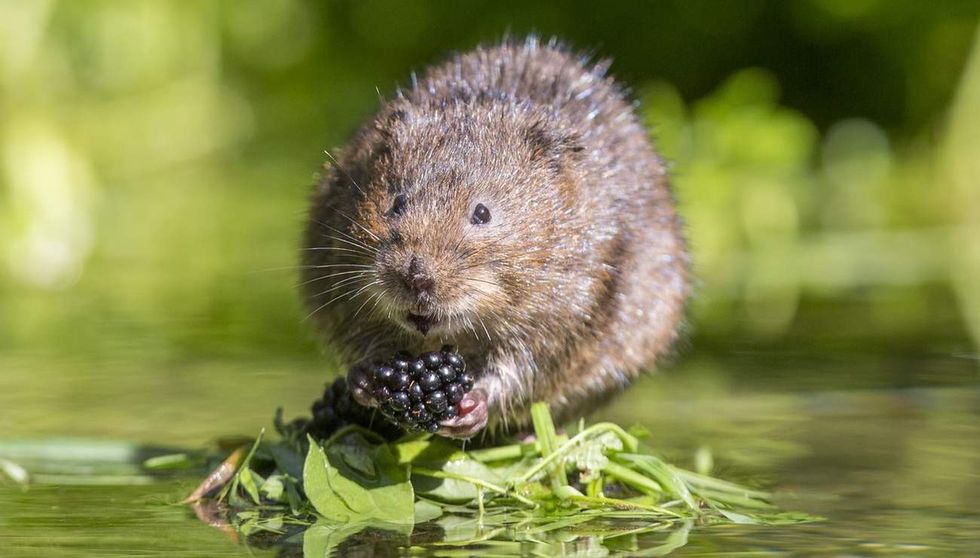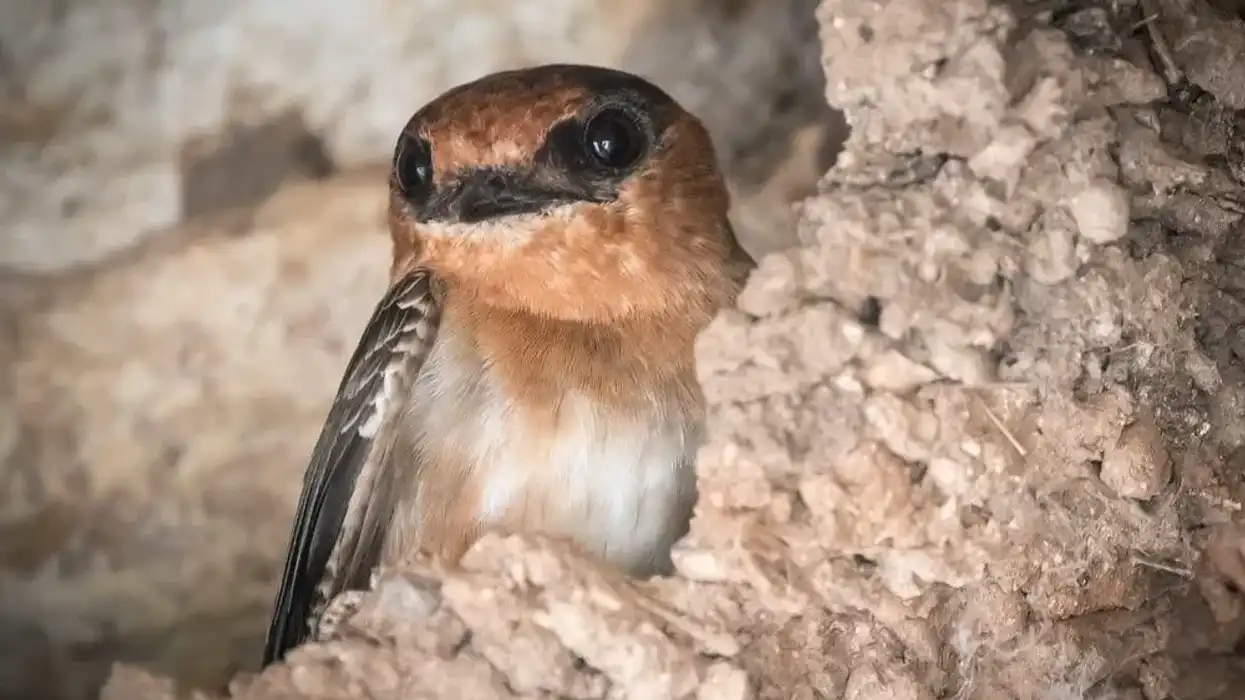What is a water vole? Voles or water vole (Arvicola amphibius) are also known as water rats because of the great degree of resemblance in appearance to brown rats.
Populations of water voles or water rats are known to be found residing in underground burrows created near grassy river banks as well as areas near a source of water to take care of their dietary requirements.
On an average these creatures can grow up to a length ranging between five to seven in but their tails are usually almost half the length that of rat.
Although, small in size, these animals can cause significant damage to gardens and plantations in almost no time as the water voles like to remain around an identical place. Once they make their burrows in your lawns, there is no other option but to contact professional services.
While such damage can also be caused by rats, what sets apart a European water vole is the unique 45-degree angles at which it cuts the stems. They also tend to leave behind cigar shaped droppings around their burrow.
Most of the water voles are dark brown in color and have a set of small ears, rounded nose, and a furry tail. The primary habitat of this species is in Britain but now they are found all over Europe.
As a matter of fact, most countries in Europe regard them as pests and use American mink to fight the menace created by water rats across Europe.
The American mink prefers to feed on these water voles and can even catch them from the burrow. After reading these interesting facts about the British water vole, check out our other articles on field vole and patas monkey.
Water Vole Interesting Facts
What type of animal is a water vole?
The water vole (Arvicola amphibius) is a species of rodents that are aquatic creatures and can be found living along waterside throughout the Britain and Europe. Water voles resemble rats in appearance but have various different physical features like a short tail and small eyes.
What class of animal does a water vole belong to?
The water voles (scientific name Arvicola amphibius) belong to Mammalia class as they give birth directly to their young one's. In appearance, a water vole may appear like a brown rat that resides at the water's edge but has certain distinguishing features.
How many water voles are there in the world?
875,000 voles are expected to be in the wild as per expert estimates. These numbers can decline if there is any sort of human interference in their lives.
Where does a water vole live?
The water voles can be located in various regions of Europe but they are primarily found around the United Kingdom.
What is a water vole's habitat?
Water vole habitat consists of grassy banks alongside sluggish transferring rivers, lakes, ponds and other water bodies. Water voles create burrows in steep grassy banks, which often consist of underwater entrances.
Who do water voles live with?
The water voles live with their kind but refrain from overcrowding. They prefer living near water source where food supply is in abundance.
How long does a water vole live?
Only a few of the entire population of water voles in a colony will survive for more than one winter. They usually don’t have a long life expectancy and tend to have a life span of around five months in the wild.
How do they reproduce?
Water voles tend to be sexually active between the months of March to September, so after the winters are over. The gestation period for females lasts for around three weeks. During the breeding season, females exhibit intense territorial instincts.
They mark their territories piles of their cigar-shaped droppings. Their breeding nests are created with the help of the shredded grass. Most often their grass nests will be found in burrows along water bodies.
What is their conservation status?
While as per the IUCN Red List, their conservation status is of least concern but in the UK, they have been identified as at risk of extinction. As such concerted efforts for their conservation are being organized across the country. These water rats are facing threat from water vole predators like American mink and habitat loss by human actions.
Water Vole Fun Facts
What do water voles look like?
A water vole looks much like a rat in appearance with brown fur, small size, and furry tail. This species is unique in the respect that the length of their tail can extend up to 5 in, which is almost half their body size.
A European water vole will have small ears and round nose, and will be much bulkier than a common vole.
Water voles can often be confused with a brown rat but this similarity is limited only to over all appearance as there are certain distinct features present in the water rat.
The brown fur might appear to be black in color if it gets wet. They color of the fur for the water rat ranges between brown and grey brown.
How cute are they?
The water voles are not regarded as cute due to their grey brown fur, small ears, and long tail. They also look dirty and unappealing to some but individuals who have rats as pets might find the water rat cute enough to be adopted.
How do they communicate?
The water voles make a plopping sound to communicate with other water rats residing in the same colony.
How big is a water vole?
Water voles reach 5.5–8.7 in length, with the tail extends to about half of their body size. The weight for adults can go up to 0.86 lb while that of juveniles will remain around 0.30 lb.
How fast can a water vole run?
As the water voles are semi-aquatic species, not a lot of information is available regarding their swimming speed but it is believed that they are expert swimmers and divers.
How much does a water vole weigh?
Water voles can grow between 5.5–8.7 in length, and they also have a tail which is about half of the size of the body. Adult water voles tend to be heavier, weighing somewhere around 0.49-0.86 lb. Smaller voles weigh much less at around 0.14-0.30 lb.
What are their male and female names of the species?
The males of this mammal species are known as male water vole and females of this mammal species are known as female water vole.
What would you call a baby water vole?
A baby or junior water vole is called a pup.
What do they eat?
The diet of a water rat comprises reeds, sedges, grass, rushes, roots, rhizomes, bulbs and bark, water plants, wetland plants, various other types of vegetation and grass.
Are they friendly?
The burrowing, feeding, and moves help to create stipulations for different animals and vegetation to thrive, a bit like beavers do, however on a lot smaller scale. The Wildlife Trusts and many other enterprises are working hard to prevent water voles from extinction.
Would they make a good pet?
Well, it entirely depends on your preferences as not many people are able to maintain them as pets. Their small ears, round nose, and long tail which is half their body length offers them distinctive in appearance.
This mammal has a herbivore diet and feeds on grass and other plant products. But their droppings can be a nuisance to manage.
Did you know...
The male water rat marks its territory with help of the secretions from their flank glands. They rake the hind feet over the gland to push out the secretion.
Water voles usually live in burrows around rivers and water bodies in colonies of around 8-40 individuals.
The maximum age of water voles is around five months only, they hardly survive even a single winter in their lifespan.
Many people often confuse them to a brown rat due to the similarities in the appearance.
What helps water voles swim?
Water voles swim, which is why they need flaps of skins over their ears. These flaps keep water out when they are swimming. They’re usually found in banks of slow-flowing rivers, lakes, and ponds. They like areas with thick vegetation, which makes them less visible to predators. They dig burrows around the banks of water bodies.
What sound does a water vole make?
Water voles make a unique 'plopping' noise as they leap into the water. However, considering that frogs and different animals can make a comparable sound, as can rocks and branches falling into the water.
Here at Kidadl, we have carefully created lots of interesting family-friendly animal facts for everyone to discover! Learn more about some other mammals including elephant shrew, or snowshoe hare.
You can even occupy yourself at home by drawing one on our cute shrew coloring pages.










